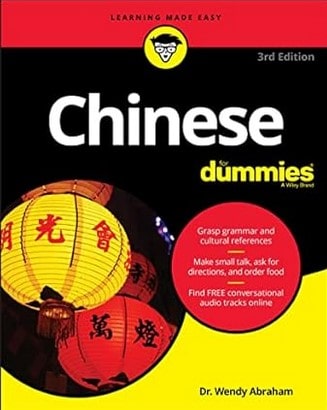Can the popular language learning app Duolingo get you to the highest levels of Chinese? Here are the reasons why you shouldn’t expect Duolingo to help you reach high level fluency in Mandarin.
The well-known app may be one of the most downloaded language learning applications, but – certainly when it comes to Chinese – it’s primarily intended to teach basics to beginners. So expect basic vocabulary, simple sentence structures, and tons of repetition, as well as spam emails from the Duolingo Owl if you fail to engage with the app for more than 24 hours, but after that, the learning path basically stops.
But let us slowly unpack the reasons why this commercialized language app isn’t suitable for anything beyond HSK 3 or 4.
1. Tones and pronunciation feedback – insufficient
Tones are fundamental in Mandarin: meaning often depends critically on them. Duolingo introduces the concept of tones, but it doesn’t give them the attention they deserve, nor does it give you corrective feedback on tone mistakes. So if you’re relying heavily on Duolingo for pronunciation, better look for other resources, because it’s just too easy for tone errors to become entrenched. When you don’t take them seriously, you probably live to regret it.
Alternatives: Some of the newer AI-powered language learning apps like Talkpal provide feedback on tones and offer pronunciation exercises. It’s very basic, but an affordable option if you can’t get real-life feedback from a Chinese teacher.
2. Reading and writing – far from enough
Duolingo focuses on simplified characters, and you get gradually introduced to a number of frequently used characters. But, of course, it is nowhere near the amount you need for advanced reading and writing. Stroke order, handwriting, and stylized (or less frequent) character forms are often not deeply practised. There’s also a limit in how much “active recall” (writing or typing) you do compared with simple recognition or multiple-choice selection. Even more important, writing short texts and receiving feedback on them isn’t part of the Duolingo curriculum.
Alternatives: For studying characters and handwriting you can turn to Skritter. When it comes to reading practice, apps like the Chairman’s Bao, DuChinese, Readibu and others have a lot to offer. If you want to improve both reading and writing skills, you can check out Maayot.
3. Rich vocabulary and idioms – don’t ask the owl
Advanced Chinese involves idiomatic phrases (成语), more formal or literary styles, colloquial/slang, and domain-specific vocabulary like law, science, politics and culture. Duolingo’s content tends to focus on everyday interaction and common vocabulary. These advanced layers are largely missing or only lightly touched. So if you want to delve deeper into certain topics or learn idioms, Duolingo is not the right learning platform.
Alternatives: I know of no app dedicated to Chinese idioms, but most Chinese vocabulary learning apps like Daily Chinese have lists with frequently used 成语, although it’s not always easy to tell which of them are most useful. When you read and listen enough, you’ll encounter them naturally.
4. No advanced grammar
Duolingo covers grammar, of course, but primarily the basics. And don’t get me wrong, those are also the most important for everyday communication. So-called advanced grammar is actually mainly about useful connectors and sentence structures to improve your expression skills. They’re used less frequently, but they certainly offer significant added value if you want to express yourself more eloquently.
Alternatives: If you don’t want to buy a Chinese grammar book, you can turn to the Chinese Grammar Wiki online, YouTube channels like 每日中文课 and ChatGPT (be careful though, cause it doesn’t differentiate between spoken and written Chinese that well). Most HSK apps also cover Chinese grammar.
5. Listening comprehension lacking in quality and quantity
Duolingo obviously can’t possibly offer gigabytes of Chinese listening material needed to train to an advanced level. Not to mention different conversation speeds, dialects and accents. It’s unrealistic to expect so much variety and depth from one app and – indeed – Duolingo’s dialogues don’t even make a dent in this regard.
Alternatives: What Duolingo fails to offer, YouTube, Chinese series, Chinese podcasts and radio shows do. You can also check my Chinese vocabulary notes for interesting Chinese learning content.
6. Speaking practice – big question mark
To be advanced, you must be able to produce language rapidly in different situations. This means speaking fluently and responding in real time. Duolingo offers speaking prompts, but it lacks corrective feedback or the opportunity to simulate real conversations where you need to think on your feet. To be honest, not too many language study apps offer this kind of learning experience currently, except for AI-powered tutor apps like Talkpal and others maybe.
Alternatives: If you don’t want to book a Chinese tutor via the well-known tutoring platforms, the more recent AI language learning apps offer something similar to face-to-face practice using voice to text technologies and LLM’s.
7. Cultural, contextual, and pragmatic fluency – not happening with Duolingo
Knowing grammar and vocabulary is one thing, knowing when a phrase is polite vs blunt, when certain expressions are appropriate, or how cultural subtleties work is another. Duolingo gives occasional cultural notes, but not enough to master all these subtle phenomenon that can take years to grasp.
Alternatives: For this – apart from cultural immersion with Chinese books and movies – only actual communication with native speakers can help.
8. Exposure to authentic materials – don’t count on the owl
How much authentic material does Duolingo contain? I mean books, news articles, radio, documentaries, vlogs – all the things you need to advance beyond that intermediate level. Naturally, you won’t find any of these in Duolingo. So you won’t be exposed to real, “wild” Chinese in all its manifestations, but instead will be fed simplified dialogues and texts.
Alternatives: To get exposure to authentic Chinese you can read the Chinese news, read Chinese books on Readibu, download a Chinese radio app or get my free graded reader by subscribing to my blog. And those are merely some options among many.
From streaks to stuck: the Duolingo trap for advanced Chinese learners
To wrap it up: don’t pin overly high hopes on a single owl-powered app. At best, Duolingo can help beginners get their feet wet, offer a quick feel for the language – and fill their screens with a generous dose of ads. Unfortunately, it won’t take your Chinese skills much further than that.
Lack of depth in grammar and nuance
Limited vocabulary range
No authentic input (news articles, podcasts, or literature)
Ineffective for character mastery
Minimal speaking and feedback practice
Serious, self-directed learners quickly realize that Duolingo is more of a distraction than a path to fluency. Instead of chasing a five-year streak, they invest their time in better tools, richer learning methods, and real-life practice. Those are the things that actually help to move forward.
Affiliate links
Disclosure: These are affiliate links. They help me to support this blog, meaning, at no additional cost to you, I will earn a small commission if you click through and make a purchase.

